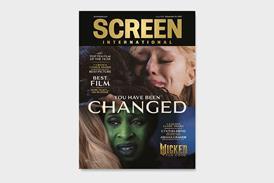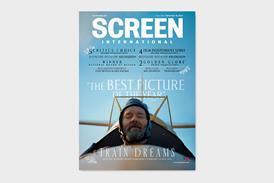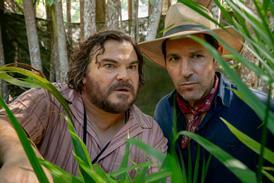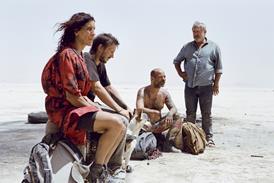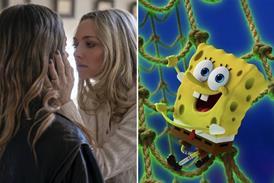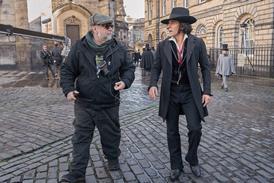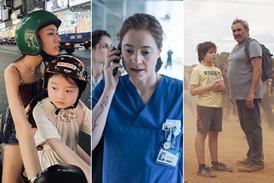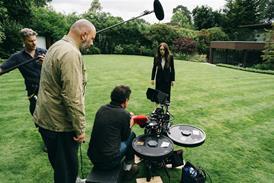Clarisa Navas’s fascinating feature plays IDFA following its Visions du Reel Grand Jury prize win

Dir: Clarisa Navas. Argentina/Paraguay/Colombia/Germany. 2025. 212mins
This fascinating, immersive documentary by Argentinian director Clarisa Navas has its origins in a short TV segment she was filming about the marginalization of native Guarani speakers on the border between Argentina and Paraguay. During the shoot, while in the titular Paraguayan town, Navas and her crew came across a precocious nine-year-old kid called Angel who insisted on being interviewed. They would stay close to him, on and off, until he became a father at eighteen.
Setting and themes cross-fertilise in interesting ways
The result is a cinematic bildungsroman of three and a half hours that took the Grand Jury Prize at Visions du Reel and has since gone on a world festival tour that includes IDFA’s Best of Fest selection. In Amsterdam it’s screening in full; other festivals have chosen to schedule the film in two parts of 100 and 112 minutes, taking advantage of a natural narrative caesura that comes when lockdown (and adolescence) briefly limit access to Angel. Yet audiences, broadcasters and programmers should seek out the uninterrupted version. The Prince of Nanawa is a film that invites us to turn off all other inputs and let ourselves get pulled into a story that plays on in the mind long after the end titles.
That chance beginning, together with the single focus and the filmmakers’ continual access to Angel (pandemic notwithstanding), distinguishes Navas’ decade-long montage from the late Michael Apted’s TV project Seven Up and its many imitators. The agency with which the voluble elementary schoolkid initially throws himself in the camera’s path becomes one of the distinguishing features of a documentary in which he is soon given his own camera to film whatever he likes in between visits from the crew.
“I’m nine years old, but I have feelings”, is one of the first utterances of a boy who, with his blond hair and Tintin quiff, stands out like a unicorn in his Latino environment. Angel’s status as a co-creator is recognized in the final credits when he is listed as one of the film’s ‘Creative Team’ alongside Navas and three other key production and crew figures.
It also helps that the setting and the themes of the film cross-fertilise in interesting ways. Nanawa is a small, scruffy Paraguayan town on the banks of the Pilcomayo River, which forms the border between the landlocked South American republic and Argentina. That first meeting takes place on a bridge between the two nations that has become a retail bazaar; later, when the fifteen-year old Angel is crossing his own border into adulthood and has found work transporting smuggled goods – on foot, as this is the only safe way across the river – that same bridge is eerily empty.
Life in the simple house Angel shares with his mother, elderly father and little sister is clearly tough, but they are by no means breadline-poor. In the film’s first half we watch a seemingly gifted child – whose meditations on life and love make him seem much older – as he is feted on his birthdays, takes part in a stiff, teacher-coached school show, and discovers romance. Footage shot by Angel himself – including an interview with his mother, whose quiet surface conceals deep currents – is signalled by a black frame, while scenes shot by Navas and her crew over several visits fill the screen.
But here too, the borders blur. Angel is clearly fascinated by the whole process of making a film and becoming an actor in it. He becomes increasingly attached to these visitors who give him the attention he craves. Gradually, he turns the tables on the director and her DoP and creative partner Lucas Olivares, plying them with questions, or directing Navas to run and jump when he grabs the camera and takes on her role. They become part of the family, helping to clear up after one of the many floods to which Nanawa is prone, and in the process reveal some faults of their own – including a tendency to shape Angel’s opinions, especially when, to their horror, he toys with the idea of becoming a cop.
The rapport is not without friction, especially in the film’s second part when an adolescent, acne-pocked Angel seems both to invite and resist these outsider-friends’ invasion of a world that is becoming complicated – not just by hormones, but by the crime and violence that bubbles not far under the surface. In the montage of smartphone shots that fill many of the pandemic years, Angel, who had previously seemed to be exploring gender borders, becomes a jock: working out, indulging in gangsta cliches, later taking up with a girl who refuses, at first, to be filmed.
Angel’s rediscovery of a much older, well-off and well-travelled brother in Argentina looks for a while as if it might provide a neat emotional kicker to the film’s darker final half, but instead it turns out to be a red herring. This remarkable documentary’s actual resolution, is far richer – and, like life, more open-ended.
Production companies: Gentil Cine
International sales: Gentil Cine, produccion.gentil@gmail.com
Producer: Eugenia Campos Guevara
Editing: Florencia Gomez Garcia
Cinematography: Lucas Olivares

